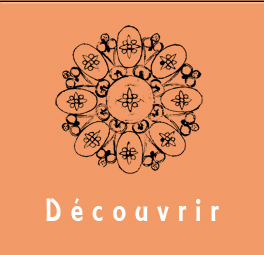
[ Departmental Museum of Bresse - Domaine des Planons ]
[ The collection of Bressan enamels of the Ain Department ]
[ Bressan enamellers from Bourg-en-Bresse ]
[ A knowhow between tradition and modernity ]
[ Bressan enamels shine at World Fairs ] [ “Joyaux du petit monde” ] [ Bressan enamels and the society life ] [ Religious Bressan enamels : devotion and liturgy ]
[ Bressan enamels shine at World Fairs ] [ “Joyaux du petit monde” ] [ Bressan enamels and the society life ] [ Religious Bressan enamels : devotion and liturgy ]
Departmental Museum of Bresse - Domaine des Planons
Exterior view of the main house of the Planons farm
The departmental museum of Bresse - Domaine des Planons is situated in the Ain department, between Bourg-en-Bresse and Mâcon, an hour from Lyon and an hour and a half from Geneva. A "Musée de France", its mission is to conserve and celebrate Bressan local heritage, for the enjoyment and education of a wide audience. Previously a food storage location, now the base for this museum, the Domaine des Planons, of which twenty hectares are open for viewing, constitutes a link between past and present, between traditional farm and 21st century museum.
The departmental museum of Bresse - Domaine des Planons is situated in the Ain department, between Bourg-en-Bresse and Mâcon, an hour from Lyon and an hour and a half from Geneva. A "Musée de France", its mission is to conserve and celebrate Bressan local heritage, for the enjoyment and education of a wide audience. Previously a food storage location, now the base for this museum, the Domaine des Planons, of which twenty hectares are open for viewing, constitutes a link between past and present, between traditional farm and 21st century museum.
Interior view of the main house of the Planons farm
This historic agricultural land of 48 hectares, named "Domaine des Planons" as of the 1930s, acquired and managed by the department from 1988 on, is the place to discover the wooded countryside and agricultural activity of Bresse. It has also become a charming walking area where you can observe the local bird life and the changing seasons. It's a lovely place to take a day away from the city, with a picnic area under ancient oak trees.
This historic agricultural land of 48 hectares, named "Domaine des Planons" as of the 1930s, acquired and managed by the department from 1988 on, is the place to discover the wooded countryside and agricultural activity of Bresse. It has also become a charming walking area where you can observe the local bird life and the changing seasons. It's a lovely place to take a day away from the city, with a picnic area under ancient oak trees.
External view of the museum
The farm, built between 1603 and the 19th century, is an architectural feat, fortunately saved thanks to its registration as a Historic Monument in 1938. An example of Bressan architecture, this farm of exceptional beauty is made up of five bodies of timbered buildings, with materials such as cob and loam used in their construction, organised around a vast courtyard with the outbuildings and main house. It is characterised by not one but two galleries lining the courtyard, with stylish arcades and the famous and rare "cheminée sarrasine", an unusual form of chimney, a typical Bressan architectural feature. A reconstitution based on an inventory taken after the death of an occupant in 1784 transports the visitor into the interior furnishing of this habitation, relatively common around the time of the French Revolution.
The farm, built between 1603 and the 19th century, is an architectural feat, fortunately saved thanks to its registration as a Historic Monument in 1938. An example of Bressan architecture, this farm of exceptional beauty is made up of five bodies of timbered buildings, with materials such as cob and loam used in their construction, organised around a vast courtyard with the outbuildings and main house. It is characterised by not one but two galleries lining the courtyard, with stylish arcades and the famous and rare "cheminée sarrasine", an unusual form of chimney, a typical Bressan architectural feature. A reconstitution based on an inventory taken after the death of an occupant in 1784 transports the visitor into the interior furnishing of this habitation, relatively common around the time of the French Revolution.
Interior view of the museum
Opened in 2005, the museum, built for purpose, is deliberately anchored in the 21st century thanks to its use of materials, its architectural style and contemporary scenography. Meandering through curved glass panels evoking a wooded countryside, the visitor views collections on two themes: traditional regional costume, presented in all its diversity and closely associated with Bressan enamels; and Bresse's culinary style, of which various aspects are presented: cultivation of quality products and development of agricultural practices, home cooking and preserving, gastronomy and top chefs, manners and table setting.
Opened in 2005, the museum, built for purpose, is deliberately anchored in the 21st century thanks to its use of materials, its architectural style and contemporary scenography. Meandering through curved glass panels evoking a wooded countryside, the visitor views collections on two themes: traditional regional costume, presented in all its diversity and closely associated with Bressan enamels; and Bresse's culinary style, of which various aspects are presented: cultivation of quality products and development of agricultural practices, home cooking and preserving, gastronomy and top chefs, manners and table setting.
The collection of Bressan enamels of the Ain Department
The Ain Department currently owns a public collection of Bressan enamels. This world-class collection is displayed in Bresse's museum Domaine des Planons. This collection is remarkable due to its rarity, its scientific quality and unusual aesthetic. It contains historical artefacts, which carry the history of a fine craft and its craftsmen, and the practices and uses which bind enamels so closely to the people of Bresse. The collection is made up of almost a thousand pieces: around two hundred and fifty items of jewellery, decorative and religious items, one hundred and thirty items used in fabrication, more than five hundred unmounted enamelled plaques and around fifty documents.
This travelling exhibition is based on the temporary exhibition and its bilingual catalogue Emaux de Bresse, joyaux du quotidien, presented during the 2014 and 2015 seasons of the departmental museum of Bresse. The collection aims to create a platform for Bressan enamels, which, until now, have remained largely unknown and uncelebrated outside of the Bresse region. We hope to present several different aspects: historical and technical, anthropological and social. Contrary to the common conception of Bressan enamels, that they were produced mostly during the 19th century and worn in a rural context, the diversity of the objects and the expense of their creation indicate that they were designed for a variety of uses and particularly appealed to the wealthier section of society.
Papi Percossi (Rome, since 1968), Debost’s workshop (v.1922-1992), Pendant, Enamel-gold-cut glass-mother of pearl-garnet, h. 6,4 x l. 3,2 x ép. 0,6 cm.
This pendant is the result of a collaboration between the Debost workshop and the Italian jeweller Papi Percossi which show that Bressan enamels are appreciated beyond their home region, and can be a source of inspiration to others.
This pendant is the result of a collaboration between the Debost workshop and the Italian jeweller Papi Percossi which show that Bressan enamels are appreciated beyond their home region, and can be a source of inspiration to others.
Paul Sinibaldi (v. 1880),
« Bressane au brelot devant le pont de Saint-Laurent », oil painting, h. 93 x l. 74 cm
« Bressane au brelot devant le pont de Saint-Laurent », oil painting, h. 93 x l. 74 cm
Decourcelles’ workshop (v.1901-1974), Brooch, enamel-gold-cut glass- semi-precious stone-silver, diam. 3 x ép. 1,5 cm
Bressan enamellers from Bourg-en-Bresse
Time and reasons why this knowhow appear in Bresse are hypothetical. When Bressan enamels were at their height, from the second half of the 19th century to the beginning of the 20th century, some of the jewellers of the town centre of Bourg-en-Bresse knew each other. The most important jeweller’s shop are manage by Bonnet , Fornet and Decourcelles who follow one another. Each workshop had its director, sometimes an enameller, with a team of specialised craftsmen under him. Expertise, tools and secret techniques were sometimes kept jealously within families, and passed from one generation to the next, or taught to apprentices and workers who would go on to establish their own businesses. This period in enamelling history sees an abundance of paillons, cabochons and enamel beads, the style of the time.
After the First World War, the sales of Bressan enamels began to peter out, as enamels came to be seen as luxury goods. Their competition, costume jewellery, used simple materials for a striking effect. It was sold at low cost, and appealed to the public due to its quality and diversity. Nonetheless, Debost and Jacquemin enamellers continued to exercise their craft, followed later by Jeanvoine enamellers. They took pride in the expertise they managed to maintain and sought to adapt their work to the ever-changing demands of their clientele. Enamellers were craftsmen, managers, businessmen and public relations representatives all rolled into one. The style became simpler at this time, leaving the colors of the enamel and the brilliance of the paillons.
Bonnet’s workshop (v.1860-1870), Set : necklace, bracelet, pendant brooch, pendant earrings, enamel-gold-cut glass-vermeil-silver, h. 30 x prof. 29,5 x l. 24,2 cm
Debost’s workshop (v.1922-1992)
Pendant medal, enamel-gold-cut glass, emerald, h. 7,2 x diam. 5,9 x ép. 1,1 cm
Pendant medal, enamel-gold-cut glass, emerald, h. 7,2 x diam. 5,9 x ép. 1,1 cm
Jeanvoine’s workshop (since 1998) Champagne and wine corks, enamel-gold-rubber-silver, h. 5.5 x diam. 3.8 x l. 7.6 cm.
A knowhow between tradition and modernity
The production of Bressan enamels depends on a delicate balance of tradition and modernity. The cultural integrity of the craft and the continuing knowledge of technique are kept alive through the transmission of ideas, sketches and tools, pieces made by predecessors, information on different stages of production and their order, correct handling and inside knowledge. However, a high level of specialisation coupled with a historical continuum bring with them certain limitations. The slightest break in communication can lead to loss of knowledge or technique, as in the case of the unjointed sphere.
Jeweller-enamellers are also continually confronted with the ever-changing demands of their clientele, and must regularly find new styles, new aesthetics and new ideas in order to maintain sales and sustain the craft. The high costs of equipment such as punches (300 euros) limit the possibility of making regular changes to the shapes of enamels; in order to change a style, the setting or the form of the jewellery is altered, rather than the enamel itself, or sometimes new objects are created, such as champagne bottle corks and badges. As for the material itself, its colour can easily be changed, and a wide colour palette is possible. New tones; whites, greens, yellows and coral, mostly opaque are placed next to reds, Bresse blues and dark, translucent greens, old-time favourites. Encouraging young jewellers to take up enamelling remains a crucial issue.
Made up of silica, metallic oxides, soda, potassium carbonate, minium and borax, enamel is obtained after several fusions in a melting pot at temperatures exceeding 1400° C.
Enameller put down the “gold paillons” and the “central rosace” using her quill-pen.
Unknown, Sketch, paper, L. 10,7 x l. 8,5 cm.
Unknown, Belt buckle, enamel-gold-cut glass-silver, L. 5,3 x l. 3,5 x ép. 1 cm.
Bressan enamels shine at World Fairs
The heyday of Bressan enamels coincided with a moment of widespread enthusiasm for universal expositions. Exceptional international platforms, these events were the perfect place to get a product known and to affirm national and regional identity. They gave artisans, industrialists and other inventors a chance to promote and popularise their work to the world scale. Bonnet, Fornet - a clever salesman - and Decourcelles played the game and got their creations into the limelight, setting up booths which resembled their shops in Bourg-en-Bresse and they are rewarded for their talent by awarding medals.
Enamelled objects the world over were brought for exhibition. Artisans from places as far flung as Limoges, Sèvres, Murano and Japan met, influenced one another, learnt new techniques, extended their commercial links, and even worked together to create exceptional pieces. They attracted a prestigious clientele, such as the Shah of Iran, and even gained the attention of the Victoria & Albert Museum, London. Thanks to the initiative of influential people, probably from the institutions, Bressan enamels began to be seen as a key part of a regional and folkloric identity created by the people of Bresse themselves. This was an image with which they identified, and with which they were content to be identified even outside of Bresse; an image which was retained by the many visitors of the 19th century, and was then diffused through history.
Guillot studio, Photograph of the Fornet’ stand at the World Fair 1864, Lyon, paper card, h. 42,7 x l. 33,6 cm.
Fornet’s workshop (v.1870-1897), Candlesticks, enamel-gold-cut glass-vermeil, h. 12,5 x diam. 9,8 cm.
At the World Fair of Paris 1900, this desk set was spotted by the Shah of Iran who order one to Fornet.
At the World Fair of Paris 1900, this desk set was spotted by the Shah of Iran who order one to Fornet.
Dupuis. D-J-B., World Fair 1889, Paris, bronze, diam. 6,3 x ép. 0,4 cm.
Mitchell. H., World Fair 1876, Philadelphia, metal, diam. 7,6 x ép. 1 cm.
“Joyaux du petit monde”
The uses, types of object and owners of Bressan enamels are many and diverse. Bressan enamels can be used to express and serve various different values: wealth, cultural references, the fashions and practices of a time, and society’s economic, commercial or artistic activities. By taking these values into account, enamellers can develop a clientele.The affordability of enamels put them within the reach of comfortably-off farming families. They were a good substitute for precious stones, and were bought in the form of jewellery or decorative objects. These items were given as special gifts, which were used to mark religious and civic rites of passage, and seem closely linked to their establishment and preservation. A cross pendant would be given at a child’s first communion, a suitor would present his beloved with a necklace en esclavage, mothers and daughters passed on their jewellery from one generation to the next. Enamels were often worn on these occasions. The image of the lady farmer in her Bressan enamels which appears on post cards and on tourist souvenirs may lead to believe that this was a frequent sight. We must bear in mind that the purpose of this image is more to express local culture than to accurately represent local practices.
Unknown, ‘En esclavage necklace’. Enamel-gold-cut glass-vermeil, L.39,5 x l. 4,8 cm. It was given as an engagement present from a suitor to his new fiancée.
Fornet’s workshop (1870-1897), Pendant brooch, Enamel-gold-cut glass-vermeil, h. 5,2 x l. 3,5 x ép. 1,7 cm. The scene is a rural one, with a background of two timber-framed farms in a wooded area, a Bressan woman in the foreground, adorning regional costume including the "chimney hat". This work of art contributes to the stereotyped picture of Bresse.
Merle’s workshop (1992-1996), Cross pendant, enamel-gold-cut glass-silver, h. 10,6 x l. 6,8 x ép. 1,1 cm.
Bressan enamels and the society life
The uses, types of object and owners of Bressan enamels are many and diverse. By acquiring items often bought, ordered or given as presents, and worn on special occasions, owners can assert their knowledge of culture and the latest trends. By taking these values into account, enamellers can develop a clientele. The level of complexity of the technique used reveals the level of wealth of the owner, be it meticulous filigree work on portrait frames, or an abundance of paillons or beads on a pendant. As for the style of the piece, it is most often in keeping with the style of the time. On certain belt buckles and brooches we find the butterfly symbol of the Art Nouveau movement.Modest in price, yet culturally relevant, Bressan enamels quickly became the privilege of the urban upper and middle classes. This can be seen in the vinaigrettes (bottles for smelling salts), opera glasses, dance cards, chatelaines or cufflinks worn to events of varying levels of importance, whether held in a private residence or in public places such as the theatre or opera. This was the ideal place to make an impression on one’s peers, by showing off personal wealth and taste; a lady’s style, a gentleman’s elegance. It was in these highly visible environments that artists such as Anna Pavlova, the local bourgeoisie and the upper class elite became important elements in the spread of Bressan enamels, which were even occasionally given as official presents.
Unknown, Hair comb, enamel-gold-cut glass-silver-plastic, h. 9,7 x l. 10,5 x ép. 3,5 cm. This hair comb was perhaps worn by Russian ballerina Anna Pavlova.
Unknown, Dance card, enamel-gold-cut glass-vermeil, L. 7,5 x l. 4 cm. Dance cards were used during dances of the 19th century where the guests had to respect the name of their partners decided in advance and noted on it.
Unknown, Opera glasses, enamel-gold-glass-metal, h. 4,6 x diam. 3,4 x ép. 3 cm.
Religious Bressan enamels : devotion and liturgy
During the 19th and 20th centuries, enamel was frequently used for two major categories of religious objects: those used in the Catholic mass (chalices, ciborium, monstrances, crosiers etc.) and devotional objects (rosaries, holy water fonts, statues of saints, paintings of historical scenes, etc.) These objects, enamelled in an ornamental and varied style, were both symbolic and catechetical. In this neo-Gothic context, which involved a revisiting of the aesthetic of the medieval period, a new interest in religious Limousin enamel brought about a revival of enamel. Enamel work was intrinsically linked to religious ornamental gold work, in which some artisans specialised during the 19th century. The collaboration of these two groups continued into the 20th century.This was the case of Amédée Fornet. He used Bressan enamels and made the golden filigree to decorate the crowns of the Black Madonna and the Infant Jesus worshipped at Notre-Dame church of Bourg-en-Bresse, and worked with Lyon goldsmiths such as Armand-Calliat to create the main altar of this co-cathedral. Enamellers from Bourg worked for significant religious sites in Ain. They created pectoral crosses for the bishops of Belley and the priest of Ars, which are, highly unusually, decorated with interlaced filigree with little enamel plaques. They may have used Parisian and Limousin painted enamels to decorate small devotional objects such as holy water fonts and reliquaries.
Fornet’s workshop (v.1870-1897), Saint Michael slaying the dragon, enamel-gold-cut glass-vermeil, h. 34,5 x l. 21 x ép. 4,4 cm.
Fornet’s workshop (v.1870-1897), Devotional halo, enamel-gold-metal-cut glass-lead glass, diam. 38,7 x ép. 1,1 cm.
Decourcelles’ workshop (v.1901-1974), Reliquary cross, enamel-gold-vermeil, h. 13.1 x l. 8.8 x ép. 0.8 cm.

































